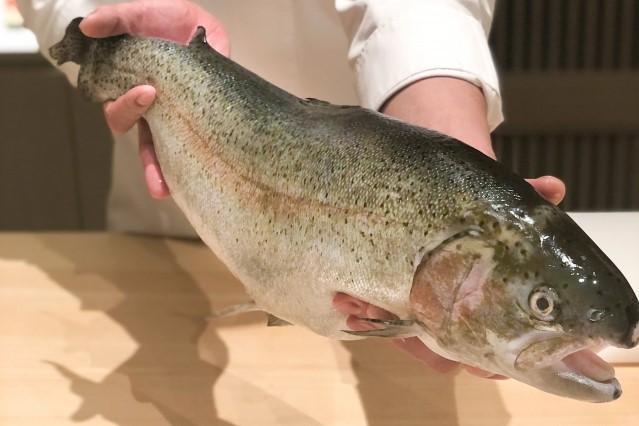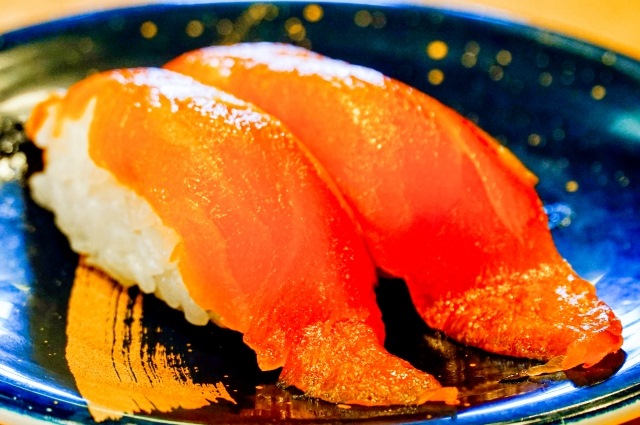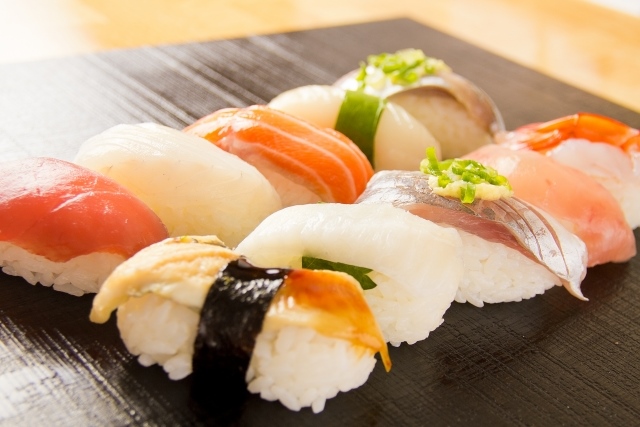Contents
Basic Information
Despite its simple appearance, Japanese nigiri sushi possesses a deep flavor and intricate technique. When eating nigiri sushi, a common etiquette is to lightly dip the seafood (Neta) part, which sits atop the vinegared rice (Shari), into soy sauce. Additionally, enjoying it with condiments like wasabi and ginger can further enhance the flavor of the sushi.
Skipjack Tuna (Katsuo)
Skipjack tuna is characterized by its low fat content and tender texture. Because it loses its freshness quickly, the surface is seared and served as “Tataki”. The peak season is from spring to early summer, but recently, “Modorikatsuo” caught in the autumn has also become popular.
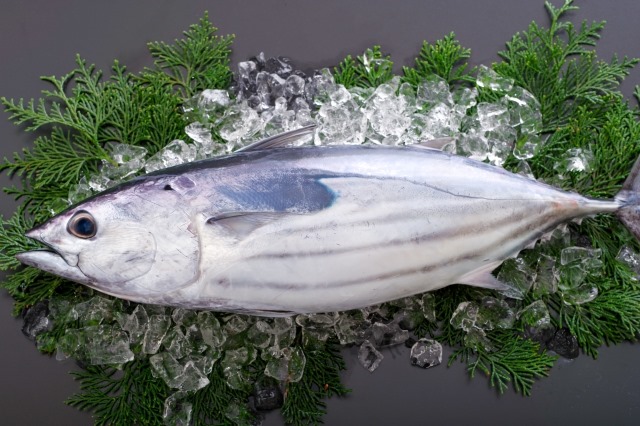
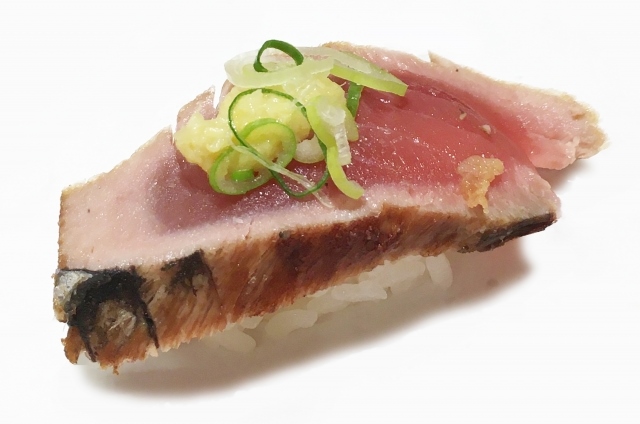
Japanese Sea Bass (Suzuki)
Japanese sea bass, which lives in bays and estuaries, changes its name as it grows, hence it is also called “Shusseuo” (promoted fish). Depending on the growth, it is named “Seigo → Fukko → Suzuki”. Its season is summer, and while the meat is light, it also has a rich flavor.
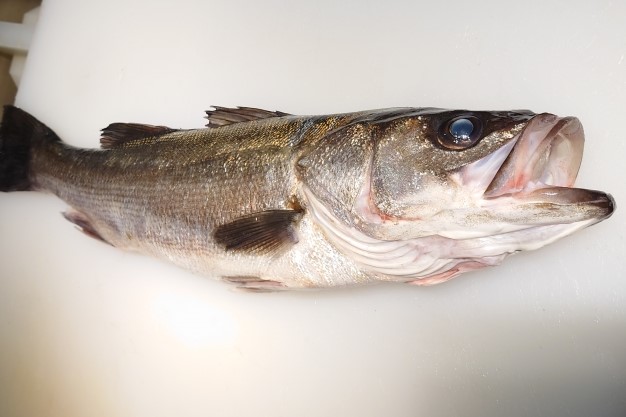
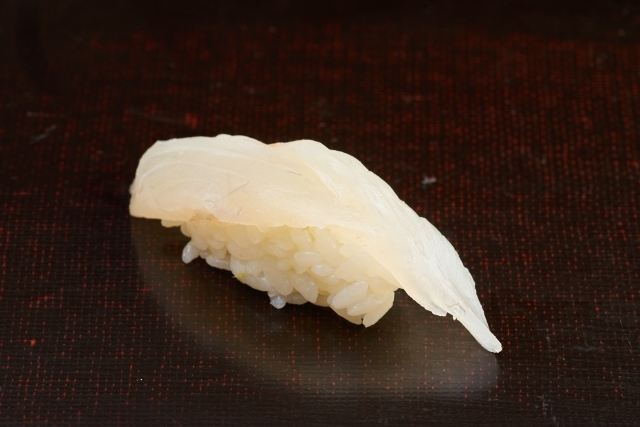
Konosirus punctatus (Kohada)
Kohada is also a “Shusseuo” that changes its name as it grows. Depending on the growth, it is named “Shinko → Kohada → Nakazumi → Konoshiro”. Kohada is eaten as sushi after being sprinkled with salt and marinated in vinegar. It is said that the skill of the sushi chef can be judged by the preparation technique of Kohada.
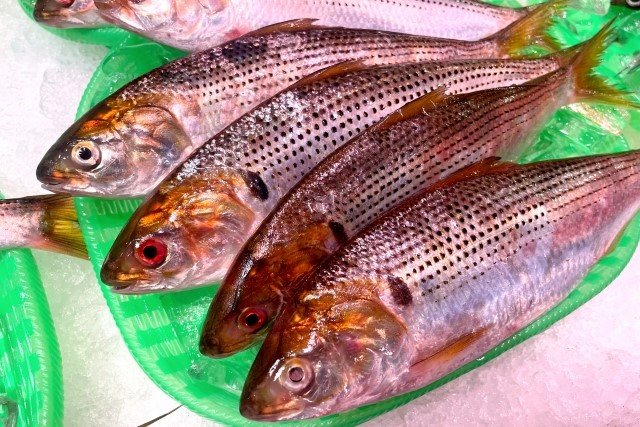
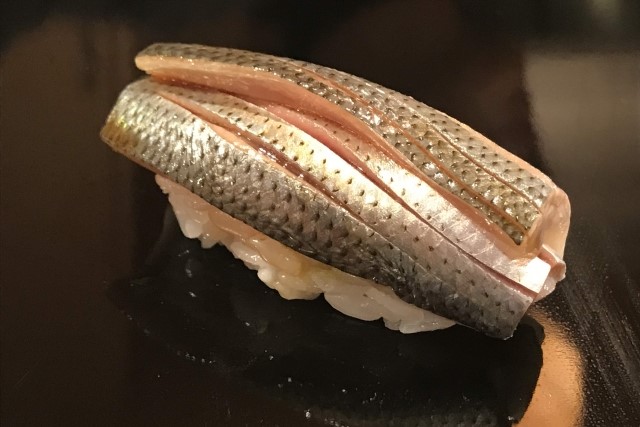
Scomber japonicus (Saba)
Mackerel has been popular as a common people’s fish since ancient times. Because the freshness falls quickly, mackerel is marinated in vinegar and used as “Shimesaba” for sushi. “Battera sushi”, where the mackerel is placed on top of the white rice and cut to eat, is also a type of mackerel sushi eaten throughout Japan.
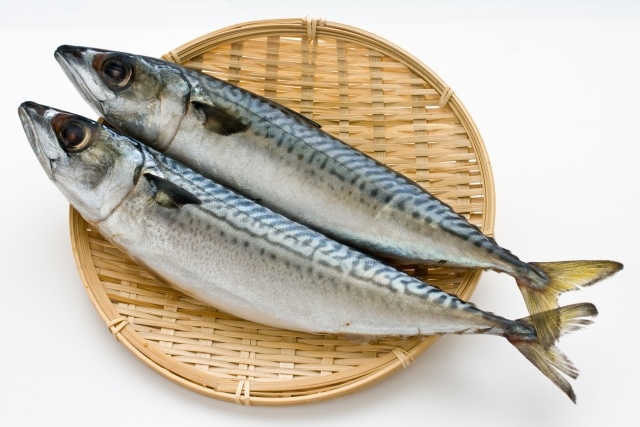
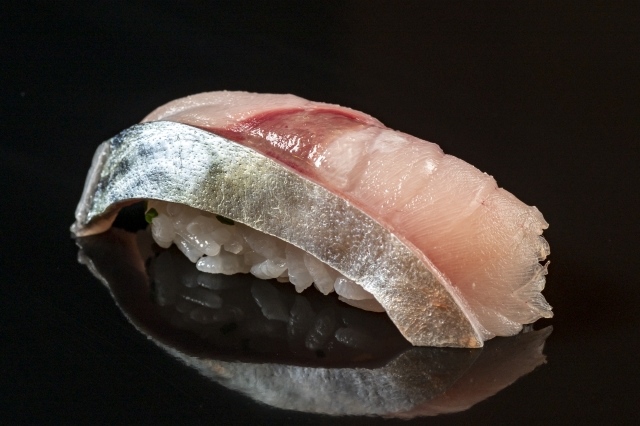
Cololabis saira (Sanma)
The name of Sanma comes from its resemblance to a sword that is caught in the autumn. It is a migratory fish in the cold seas of Hokkaido and Tohoku region. The fatty sanma is very delicious. Because it’s a fish that loses its freshness quickly, the period during which it can be eaten as sushi is limited.
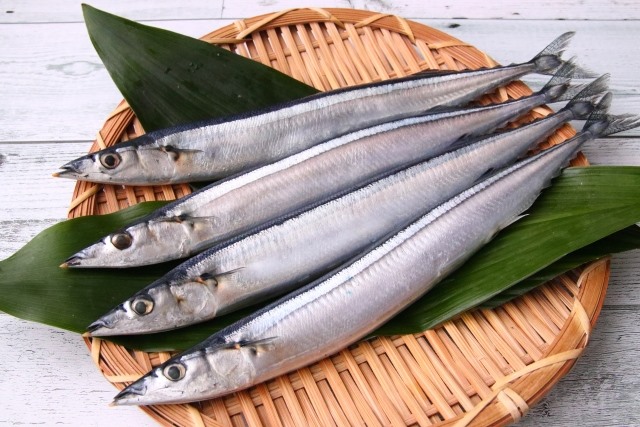
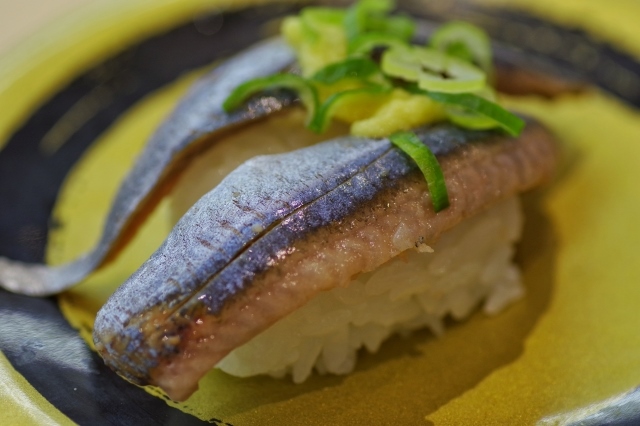
Salmon
The natural white salmon in Japan is not eaten as sushi or sashimi because it contains parasites called Anisakis. Therefore, the salmon currently on the market is a fish farmed in seawater, originally a freshwater fish, rainbow trout. It is rich in fat and is popular because it is available at a reasonable price throughout the year.
